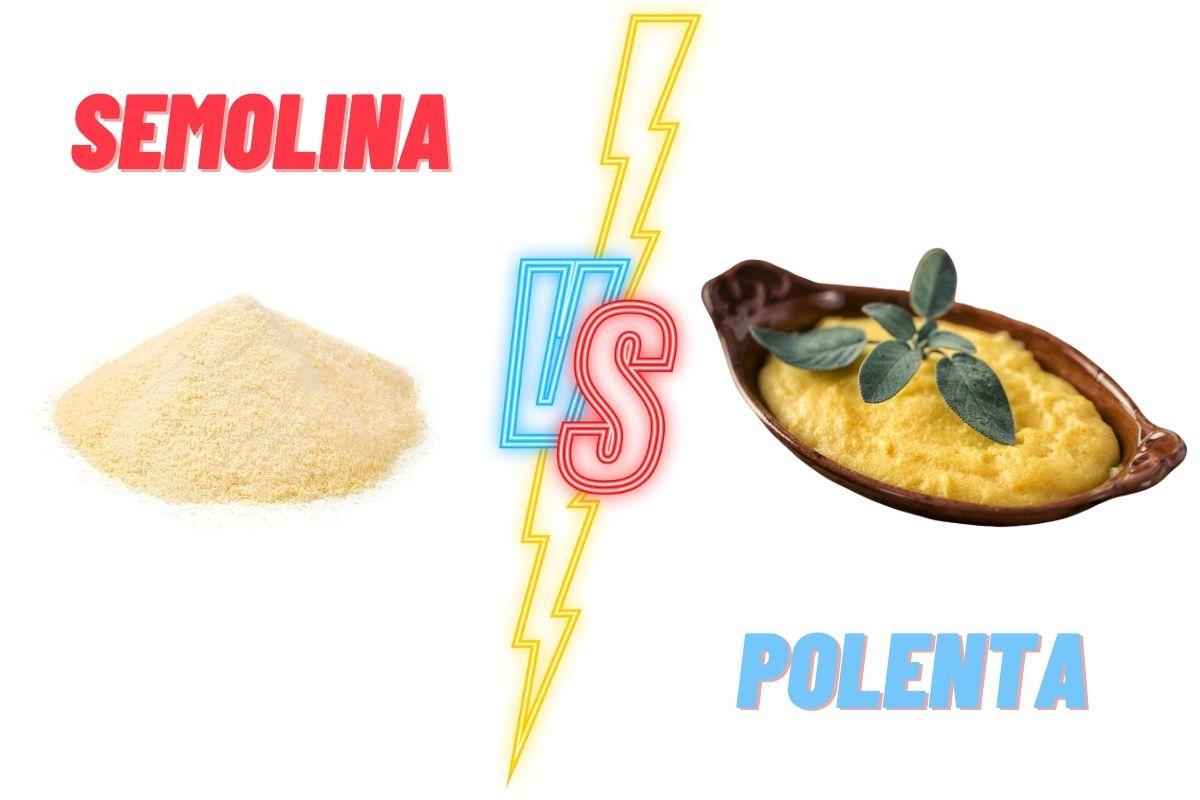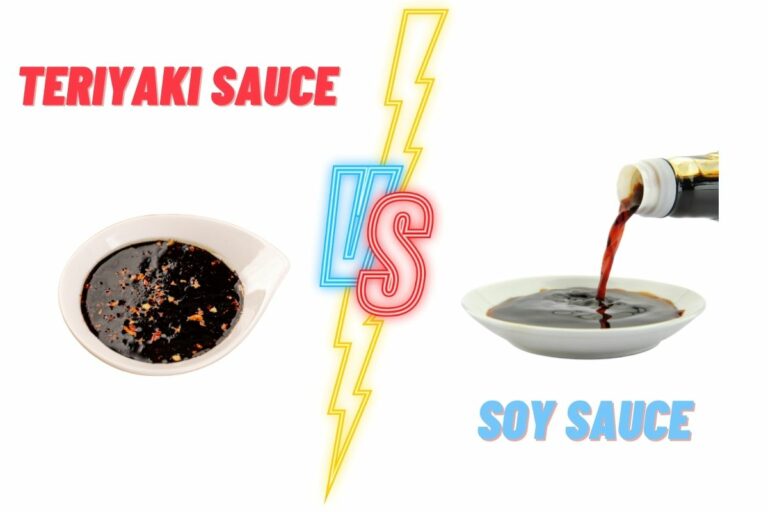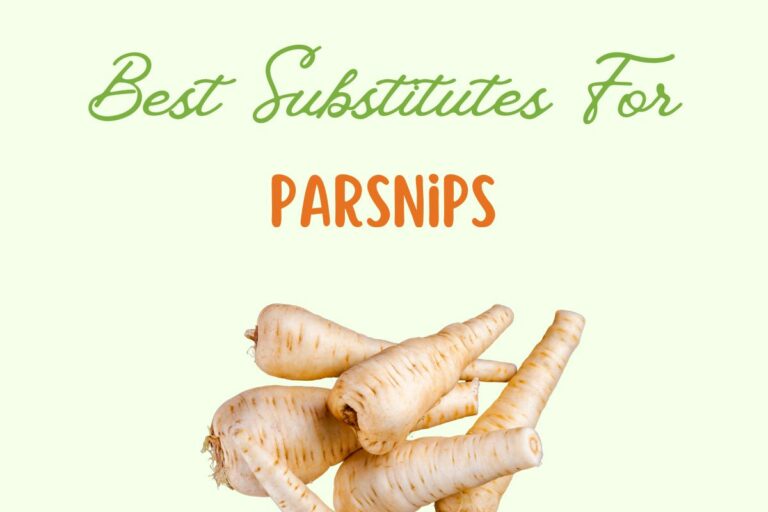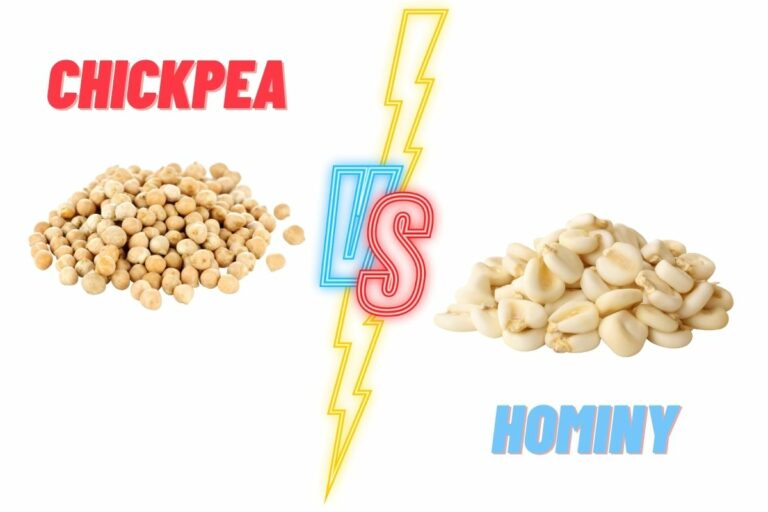Semolina Vs Polenta- All You Can Ask About Them!
If you are getting into the art of cooking, you might have come face to face with these two ingredients. Although these are not popular in every country, they are still gaining traction in the culinary community. So, what is the difference between semolina and polenta?
The flour itself is called semolina, whereas the dish itself is called polenta since it is created from boiling cornmeal. Historically, polenta was cooked using a variety of grains, but now cornmeal is the staple ingredient.
Porridge made from semolina or polenta may stand in for either rice or potatoes as a side dish. Since there is a distinguishing flavor between polenta and other major dishes, you may want to give it additional consideration.
So, if you are looking for a detailed but precise difference between the two item, you have come to the right spot.
What Is Semolina?
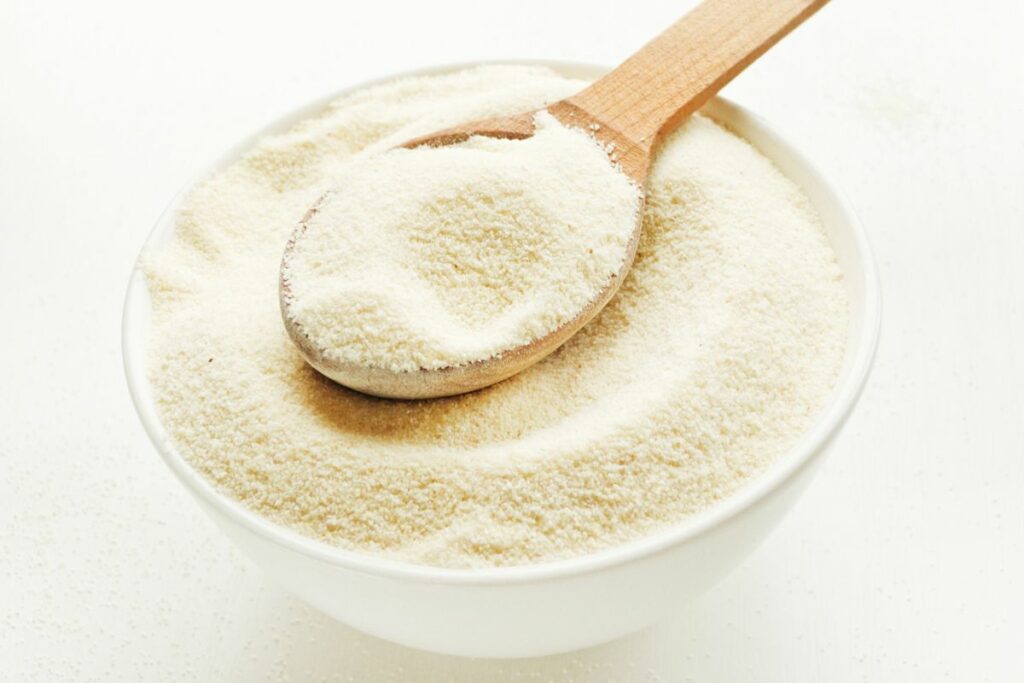
Semolina is a kind of flour milled from durum wheat that is mostly used to make couscous and pasta. There is a noticeable graininess to the flour, as opposed to a fine consistency.
Although semolina is not as widely consumed as polenta, you probably consume more semolina than polenta since it is an ingredient in many common dishes including pasta, couscous, and sweet puddings.
While semolina flour may be substituted for all-purpose flour in a variety of recipes (including porridge, cakes, pancakes, pudding, and the like), it is not often the first flour people go for.
This is because most consumers search for a gluten-free alternative when attempting to substitute ordinary flour in a recipe, and semolina flour does not provide any such advantages.
What Is Polenta?
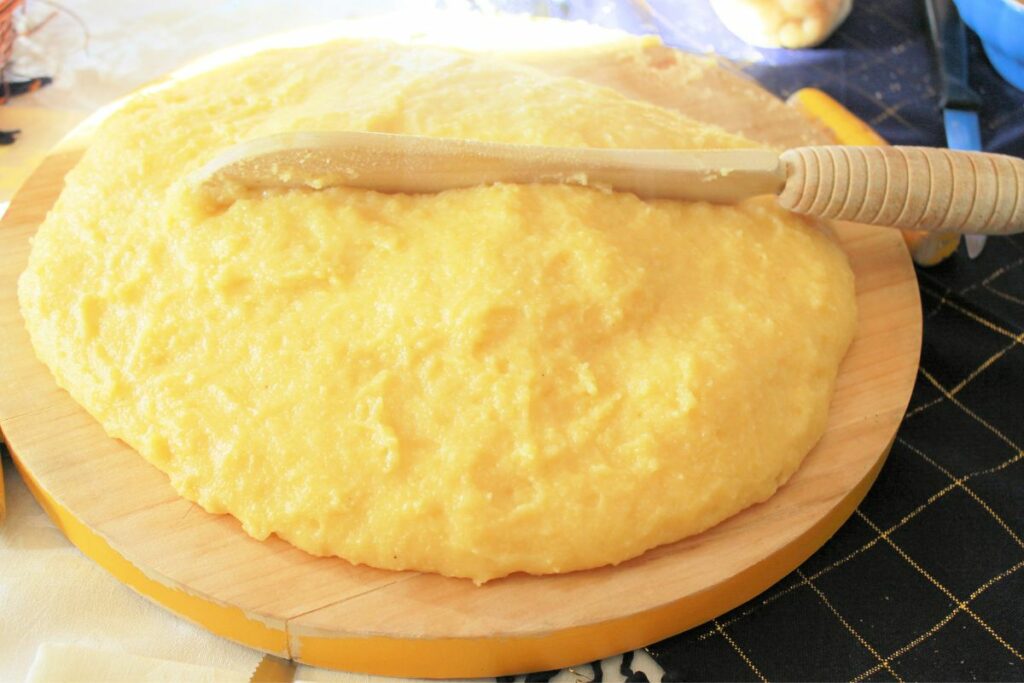
It was in Italy that the dish polenta, prepared from boiled cornmeal, first appeared, and it has since spread across the continent.
The most common way to eat polenta is as a hot porridge, which goes well with stews of many kinds. It’s a multipurpose cuisine that works well as a sweet, a side, the main course, and even as a replacement for bread in a pinch.
In sum, polenta is a versatile food that is not often used in the United States but is quite popular in other parts of the world.
Both semolina and polenta have the same adaptability, since they may be substituted in place of one another in practically any recipe. Substituting semolina porridge for polenta will result in a dish with a slightly different flavor and texture.
Differences Between Semolina And Polenta- All The Details
The definitions of semolina and polenta are in place; now we may focus on distinguishing the two. Can we explain the difference between semolina and polenta?
Flavour
Sweetness may be found in both polenta and semolina. Semolina, in contrast to polenta, has a distinct nutty taste. If you enjoy corn porridge, you’ll probably like polenta.
The raw flavor of polenta is bitter, so if you prepare it and it’s still bitter, you probably didn’t cook it long enough.
Nutrients
In terms of nutrition, polenta is much better than semolina because it has very few calories. It also has carbs, a little bit of protein, and a little bit of fiber. Semolina, on the other hand, has a lot of protein, zinc, phosphorus, and potassium in it.
Varieties
The most common types of semolina are white, yellow, and red. Semolina comes in three different textures: fine, medium, and coarse. In contrast to fine semolina and coarse semolina, medium grind semolina is more often available in grocery stores.
We can make five distinct types of polenta. Instant polenta, white polenta, polenta that has already been cooked in a tube, loosely crushed polenta, finely ground polenta, and instant polenta.
You may use any of the five different kinds depending on what you’re preparing and your own taste.
Gluten
Semolina has more gluten than polenta. This is why it is so perfect for pasta-making. Therefore, polenta or another gluten-free flour may need to be considered if you are on a low-gluten diet.
| Factors | Semolina | Polenta |
| Flavour | Sweet with a distinct nutty taste | Sweet with bitterness while it is raw |
| Nutrients | Has a lot of protein, zinc and phosphorus | Healthier because lower calories |
| Varities | Three types | 5 types |
| Gluten | Has gluten | Gluten free |
How To Use Semolina in Recipes
Making pasta from home is a typical usage for semolina flour. A high gluten concentration makes this wheat superior to others since it results in a less sticky dough that is also more elastic.
This ensures that the pasta retains its form when cooking, whether it’s a short elbow noodle or a long strand of spaghetti.
Couscous is made from semolina by adding water and stirring until little balls form. Bread, cakes, pizza, porridge, and pudding are all improved by the use of this flour.
In Greece and Turkey, semolina flour (called smida) is used to make cakes, and in Morocco it is used to make khobz, a circular flatbread cooked in the oven. Porridge made with semolina is known as rawa or sooji in India.
In Europe, it is used to make sweet puddings, but in Nigeria, it is a staple food that is cooked in water and eaten with stews and soups. Pizza crusts are often dusted with semolina before being baked.
How To Use Polenta in Recipes
You might try out these ideas to bring out the best in polenta.
- Fresh, homemade, spaghetti. If you want to create pasta from home, semolina is the best flour to use.
- food items that have been baked. Bread, biscuits, and cakes may all benefit from using semolina.
- Making porridge with semolina results in a healthy breakfast that will keep you satisfied for hours.
- (For extra taste and crunch, sprinkle some on top of your fried or baked potatoes before serving.)
- Desserts that call for semolina are possible to produce.
- To make pizza, you need dough (Semolina improves the flavor and texture of pizza dough)
Benefits and Drawbacks Of Semolina
Benefits
- You can get all the energy you need from semolina. Consume a meal prepared with semolina before engaging in a task that calls for a lot of physical strength and stamina.
- Semolina’s anti-oxidant properties make it a useful tool in the fight against illness.
- Semolina is a great long-term filler because of its high fiber and protein content. Therefore, you will not feel hungry and will be able to successfully lose weight. Semolina is a great food to include to your diet if you like to eat many times each day.
- The iron in your blood is crucial. Semolina’s high iron content means it’s an effective defense against anemia.
Drawbacks
- To begin, those with celiac disease or a sensitivity to gluten may find semolina problematic due to its high gluten content.
- People with a sensitivity to wheat should avoid semolina since it is produced by crushing durum wheat.
Benefits and Drawbacks Of Polenta
Benefits
- Polenta is an excellent option for those who need to avoid gluten. Polenta is safe for people with celiac disease to eat.
- Polenta is a very filling food because of the protein it provides. The fiber also makes sure that digestion goes smoothly.
- Polenta is rich in complex carbs, which the body needs. These carbs are broken down extremely slowly, while the rapid digestion of simple carbs may lead to a dangerous increase in blood sugar.
- Use polenta if you’re watching your consumption of saturated fat. It’s a great addition to any balanced diet.
Drawbacks
- For those watching their carb intake or struggling with diabetes, it may not be the best option.
- Organic polenta may give some individuals tummy troubles including bloating and gas.
Where To Find Polenta And Semolina
Semolina may be found in the baking section of most large grocery stores.
Semolina may also be found at grocery stores, particularly those that specialize in Italian cuisine. If you don’t feel like going out and finding it, you can always get it online. Several that sell semolina have caught my eye.
You can get polenta at most supermarkets. It’s probably fair to assume that it’s available at most supermarkets.
Don’t bother searching for cans of polenta; it comes in cartons or sacks. If you can’t locate this kind of polenta, you may always purchase the pre-cooked kind, sometimes known as “polenta in a tube.”
You may bake or fry it after slicing it, and it’s cheaper than the other option. To avoid overpaying at the supermarket, purchase polenta in large quantities only from food service distributors. Many dollars will be spared.
Best Semolina Subsitutes
In case, using semolina isn’t your option, here are some substitutes for you.
All Purpose Flour
You may use all-purpose flour as a stand-in since it is the most common kind of flour sold in grocery stores. Numerous manufacturers have produced an abundance of options.
When I make egg pasta, I like to use this flour. It blends nicely with the others and is simple to work with throughout the kneading process. Simply use a 1:1 ratio when making substitutions.
Pastry Flour
Try using pastry flour instead of semolina flour the next time you bake bread at home. Because of its decreased gluten concentration compared to semolina, it works well in manufacturing of soft baked goods like cupcakes, muffins, and cookies.
Pastry flour may be substituted for all-purpose flour to give bread a lighter, fluffier texture. To make this using pastry flour instead of semolina flour, increase the amount to 1 1/2 cups.
Whole Wheat Flour
Whole wheat flour is a staple in many bakeries and is a favorite among pastry makers. When you think about it, this flour is the one that started it all.
This flour is one of the most adaptable options available and may be used for a wide variety of recipes.
There’s no way to mess up with this method, whether you’re making bread, pastries, spaghetti, pizza, or dessert. If you’re looking for a denser loaf of bread with a pleasant scent and nutty flavor, use this flour. Substitute whole wheat flour for the semolina, cup for cup.
Best Polenta Subsitutes
You should think about the other components in the meal, particularly the watery ones, while trying to find a suitable substitute for polenta.
Grits
The differences between polenta and grits are minimal. To begin, they are constructed from several maize varieties. Yellow corn is used to make polenta, whereas hominy or white corn is used to make grits.
Boiling water and adding seasonings are all that’s needed to prepare either dish. Grits, on the other hand, change the final product significantly. They turn to mush, whereas polenta retains some texture.
Polenta may be used in place of grits in a variety of recipes.
However, grits are not a suitable substitute if the recipe calls for anything more substantial.
Mashed Potatoes
The consistency and look of polenta are most similar to those of mashed potatoes.
However, they make an excellent substitute only when used in lieu of a main or side dish.
You may substitute mashed potatoes for the polenta in the above recipe for creamy polenta with spinach, but keep in mind that the mashed potatoes will take longer to prepare.
Rice Porridge
Rice is another excellent alternative to cornmeal in polenta. Rice is a versatile carbohydrate that may be used in savory as well as sweet dishes.
When I have a hankering for polenta, I can acquire powdered rice or rice flour, but I would rather use real rice and make porridge. Furthermore, it is a less expensive option while still being one of the most easily available sources of carbohydrates on the market.
Rice porridge may take on many different tastes depending on the ingredients you use. Breakfast with the addition of chocolate, honey, and milk is a pleasant wintertime treat. Some hot chocolate rice porridge will be brought to you.
Make a delicious rice porridge by first sautéing chicken with garlic, ginger, and rice, and then boiling the mixture. If you’re feeling under the weather and can’t stomach solid food, this is the perfect dinner.
Rice has a higher capacity for absorbing water, therefore it grows rapidly when soaked. Consequently, half a cup of rice is preferable than one cup of polenta when making a substitution. Add extra ingredients to the porridge if you used a rice variety that is difficult to cultivate.
FAQs
Can You Substitute Semolina With Polenta?
Semolina may be used as a replacement for polenta in virtually any situation, therefore both are versatile. If you replace polenta with semolina porridge, your dish will have a slightly different flavor and texture.
Are Polenta And Couscous Same Thing?
When you compare the components required to make polenta and couscous, you’ll see that they’re not interchangeable in recipes.
Gluten is present in couscous since it is produced with flour from durum wheat or semolina. There is a little increase in protein content over polenta.
Because they are produced from distinct grains, couscous and polenta will cook up differently and result in very different shapes and textures.
Wrapping Up
Although sometimes they are used interchangeably in different places for cooking, they still have their distinct qualities. So, what is the difference between semolina and polenta?
While semolina is the name of the flour, polenta is the name of the dish since it is made by boiling cornmeal. Semolina is the ingredient that is used to make polenta.

